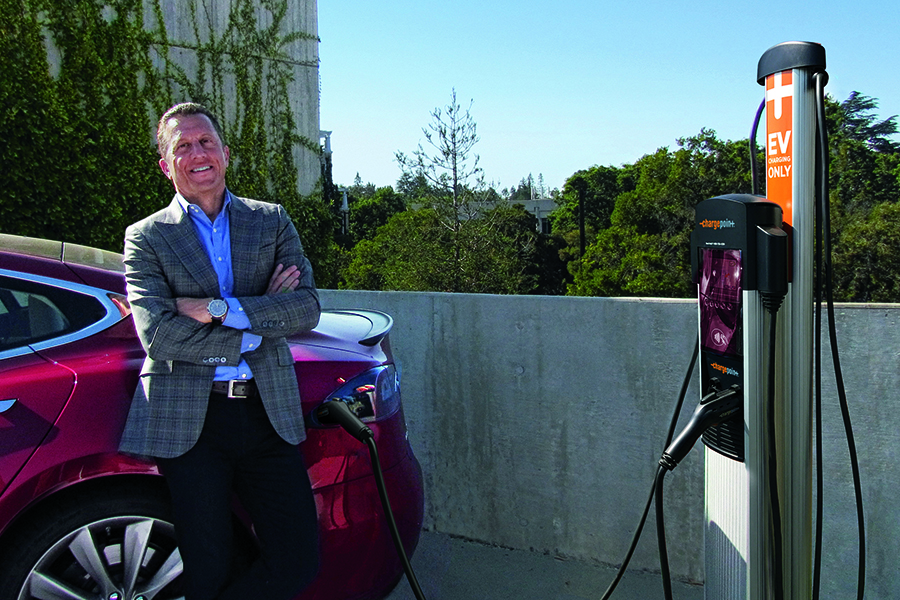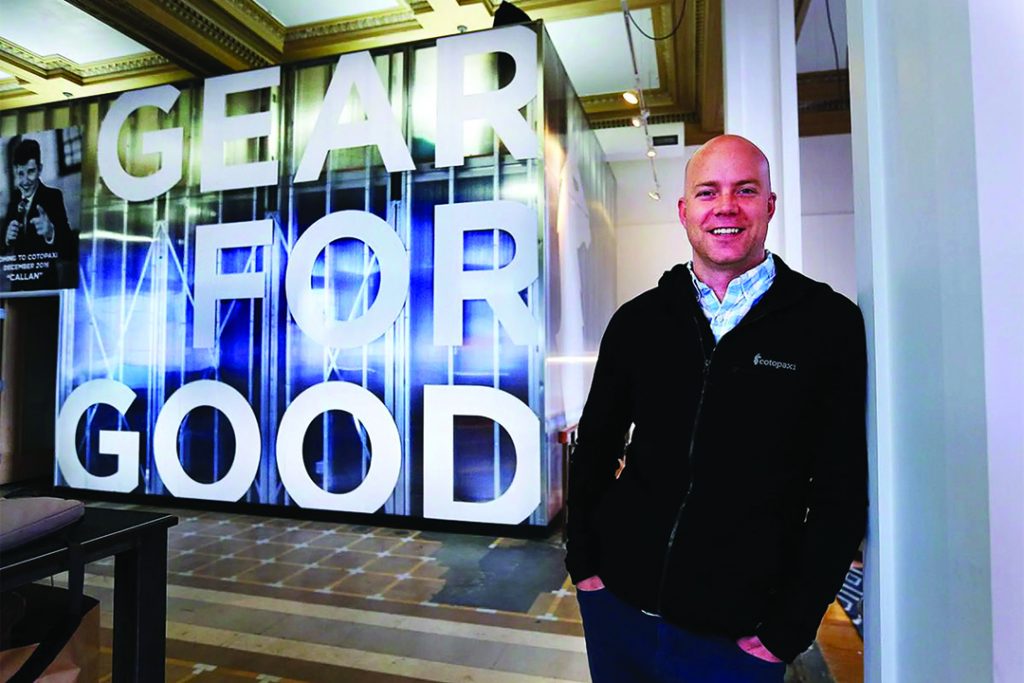My Journey from Cobbler to CEO of a Global Electric Vehicle Charging Company

There is a shopping center in Princeton, New Jersey, that exudes all the charm of a community where small businesses continue to thrive and residents take deep pride in local history. It’s the same place where Pasquale Romano used to go after school when he didn’t have sports practice or needed to work at his father’s shoe repair shop.
His dad started him on the small jobs — taking inventory, sorting materials, manning the register — and by the time he attended Harvard University, he was a fully trained cobbler. He fondly remembers his father, an Italian immigrant, telling an 8-year-old version of himself that “if this education thing doesn’t work out,” Romano always had the family business as backup.
Romano never did join the family business. Last March, at age 55, he took his company, ChargePoint, public on the New York Stock Exchange. The event marked Romano’s decade-long journey of leading the company as CEO. Based in Campbell, California, ChargePoint operates the largest online network of charging stations that allows drivers to charge their electric vehicle. The company also has a presence in 16 countries around the world.
When Romano joined ChargePoint as CEO in 2011, the electric vehicle market was barely getting started. Back then, the sales of electric vehicles represented a paltry tenth of a percent of the 12.8 million automotive market. The development of EV-charging infrastructure, which depended on the growth of the broader electric vehicle market, lagged even further behind. Building ChargePoint when the market didn’t yet exist brought out the naysayers, who said his company would never work. The venture capitalists reverted to their usual catch-all criticism for companies they didn’t yet understand: “Yes, but how will it scale?”
Romano didn’t pay attention to the skeptics. He’d done some preliminary calculations around the chances for ChargePoint’s success the same day he did his first interview for CEO. The year was 2011 and Romano was in a transition phase after selling his company, 2Wire, for $475 million the year before. He had just left a meeting with Mark Leschly, an early investor in ChargePoint who was also on the company’s board.
His head still swirling from the discussion with Leschly, he brought up the calculator on his phone when he reached his car in the parking lot. At first, he held the phone in portrait mode, but when he performed the calculation for ChargePoint’s market size, the sheer scale of the projection forced him to turn the phone 90 degrees into landscape mode. The size of the opportunity for the EV-charging infrastructure market was massive. Better still, there was no market leader in the field. He knew he was on to something big.
“From that moment, I never lost conviction in ChargePoint,” says Romano. “I like to call it my profound parking lot moment,” he recalls. A trained engineer, Romano relies on first-principles thinking, meaning he makes decisions without hedging but remains mindful of the core facts underlying his decisions and adjusts his strategy as necessary. By formulating his beliefs on data rather than noise, he tunes out the critics. “Once I make a decision, I don’t doubt it,” he says. “I’ll revisit it when I receive new information — and even challenge my decision — but never in the context of doubt.”
On reflection, Romano identified three main challenges. The first was raising capital from investors, which was particularly hard because the market for electric vehicle charging was not yet established. With a new financing round being raised every 18 months, Romano often had to take a lower valuation for his company. The second challenge in the early days was convincing talented people to take the risk and join his young company. Lastly, the third challenge Romano faced was managing the capital. ChargePoint required hundreds of millions of dollars to scale and needed to continue expanding to avoid investors giving up too early — which would have killed the company.
As ChargePoint grew, the early difficulties subsided. Much of this had to do with the confidence shown (before their IPO) by private investors, from which they raised $660 million. These included American Electric Power, BMW i Ventures, Chevron Technology Ventures, and the California Pension Plan Investment Board. Attracting talent once the company hit critical mass also became easier, and cash constraints significantly lessened once the company raised $300 million in its IPO.
Romano remains undaunted by the new challenges before him now that he is CEO of a public company. He wakes up every day at the same time and rarely misses a workout. For the last 13 years, he has competed in triathlons. Family remains a top priority, and he stresses the importance of seamlessly interweaving home and work priorities into a mosaic of highly ordered, interworking parts.
His cobbling skills are rusty nowadays, but he hasn’t forgotten working in his father’s shop gluing soles on torn-up loafers and buffing dull leather until it gleamed. His father closed the shop when he retired years ago, but Romano recently accompanied his parents to the site of the old family business for sentimental reasons. As he drove into the parking lot, he noticed the adjoining store fronts had all changed, and their old building had undergone some healthy renovations. It wasn’t until he parked the car that he saw a familiar metal structure jutting from the ground: There, in the same lot that his father’s customers used to park, were a set of ChargePoint charging stations. “It was an emotional moment,” Romano recalled. “It brought my whole life full circle.”
Samantha Huang is a principal at BMW i Ventures, where she focuses on investments across AI and big data, autonomous driving, Industry 4.0, sustainability, and the next generation of human experiences. She is also head of content at the Emerging Venture Capitalists Association (EVCA) — an association for pre-partner venture capital investors. The membership base comes from a diverse assortment of backgrounds to share insights on industry verticals, co-investment opportunities, career planning, and personal interests.





Responses